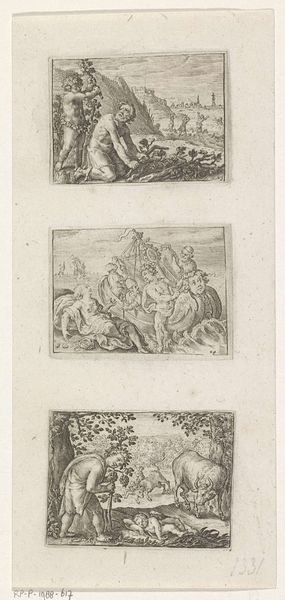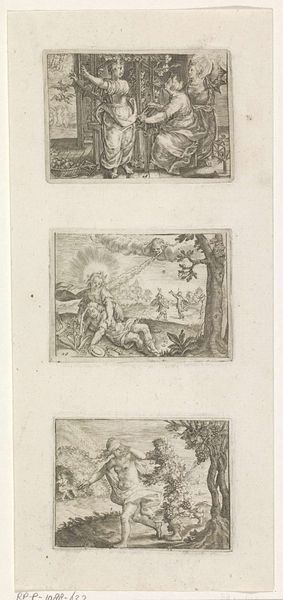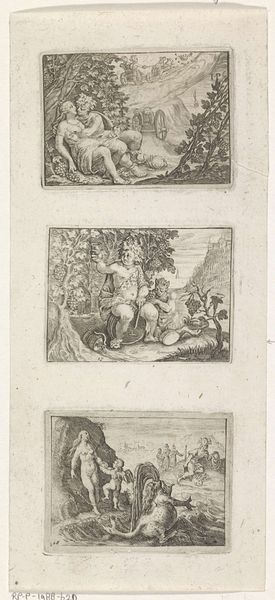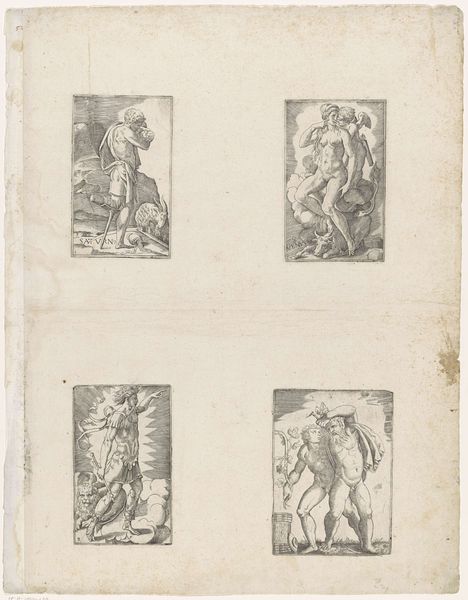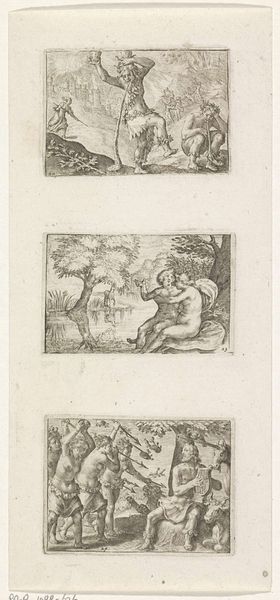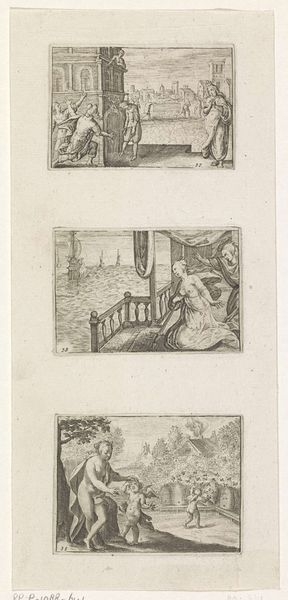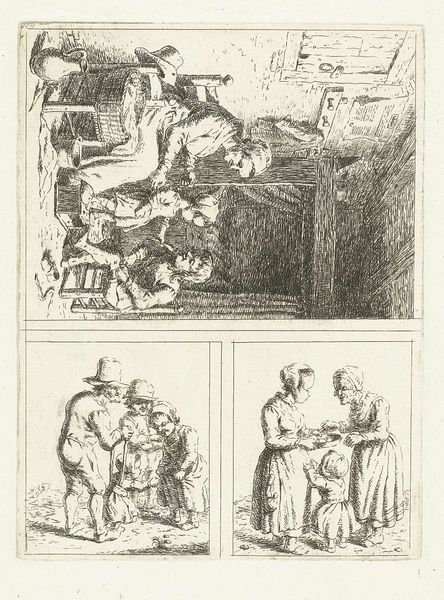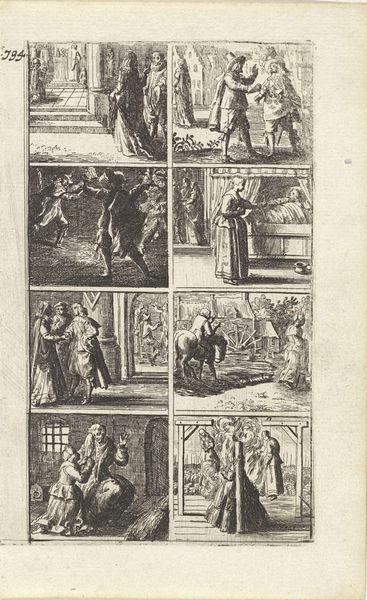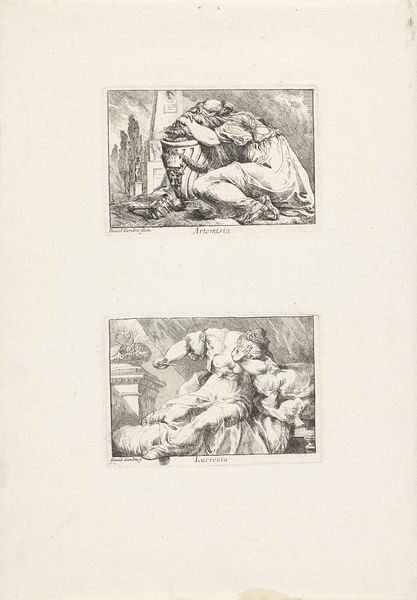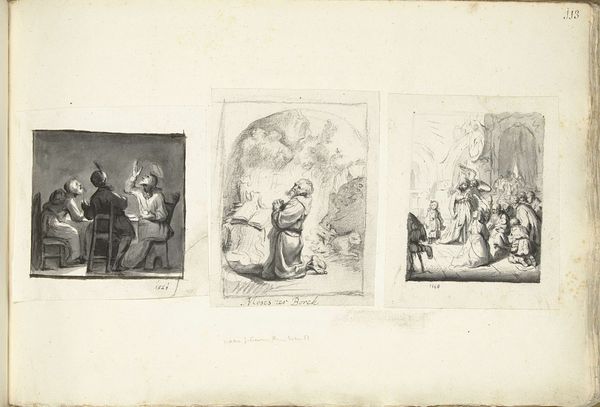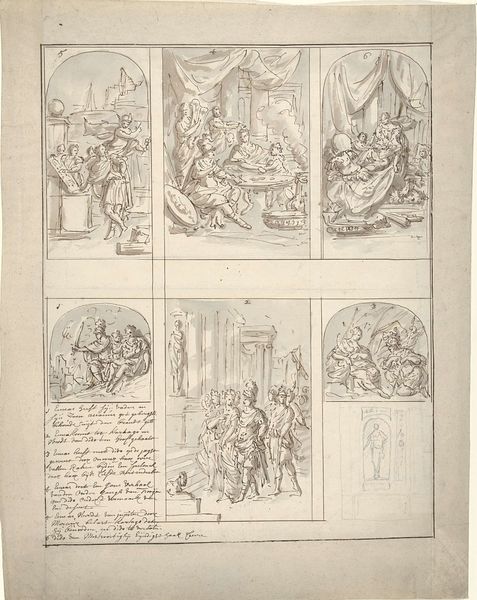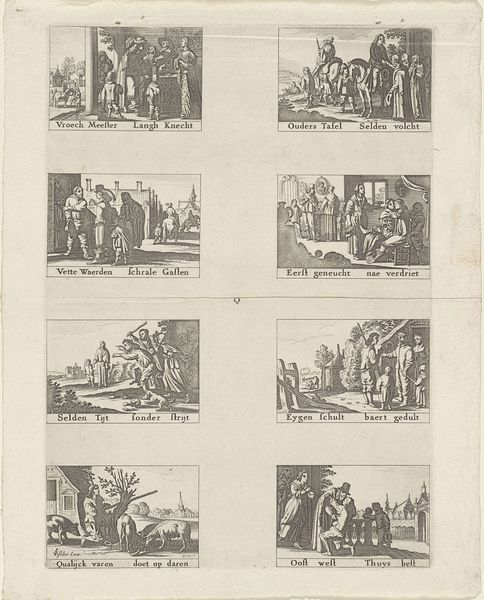
print, engraving
#
allegory
#
narrative-art
#
baroque
# print
#
figuration
#
history-painting
#
engraving
Dimensions: height 218 mm, width 96 mm
Copyright: Rijks Museum: Open Domain
Curator: This engraving, dating roughly from 1680 to 1800, is attributed to the enigmatic Monogrammist MP, and it's titled "Amor schiet een hert / Atalanta en Hippomenes / Pygmalion," grouping together three classical narratives in a single print. Editor: It's a triptych, of sorts, though all rendered in this somewhat stark, grayscale. The stories unfold vertically, almost like comic-book panels, starting with, if I'm reading it right, Cupid taking aim at a stag? The feel is... antique, but also somehow brisk and action-packed. Curator: Exactly. This ordering reflects a prevailing cultural interest in the themes each myth presents. Note the first vignette—Cupid’s hunt could symbolize the perils and pursuits of love, highly resonant within Baroque social discourses on desire and marriage. These images weren't merely decorative; they were also didactic tools. Editor: Didactic, right, so it is more about what love *should* be, instead of letting desire run free. Then there's the middle scene of a race…a dramatic foot race and then a king who looks kind of grumpy and dissatisfied at the bottom. Is that the sculptor Pygmalion, I wonder? There is some potent melancholy seeping out from it all. Curator: Spot on. That is Atalanta and Hippomenes, and you can even make out the golden apples, critical for Hippomenes winning the race. As for Pygmalion, note the gaze between him and his sculpture; it comments on the artist's relationship to his work but also on the social and gender expectations present at the time. Editor: Ah, yes the loaded male gaze! In many ways the print is telling three variations on love as transformative, though maybe always defined on male terms. A stag as the prize, a race, a sculpture that needs animating: love here is work, competition, an aspiration! Curator: Absolutely. What these images communicate extends far beyond simple aesthetics. The convergence of these myths within one sheet highlights the interconnectedness of these love themes. Each one reflects varying concepts about love as active, desired, or transformative. Editor: Which reminds us of the complex cultural values embedded in even the smallest art piece. The engraver presents classical myths not as whimsical flights of fancy but as models and warnings within very strict boundaries. That melancholic feeling gets so much stronger! Curator: Precisely. So when viewing it today, we consider its role within a world seeking models of order. Editor: Thank you, Curator! This makes me ponder on whether or not such strict versions of love still resonate nowadays, but perhaps in equally rigid new forms.
Comments
No comments
Be the first to comment and join the conversation on the ultimate creative platform.

